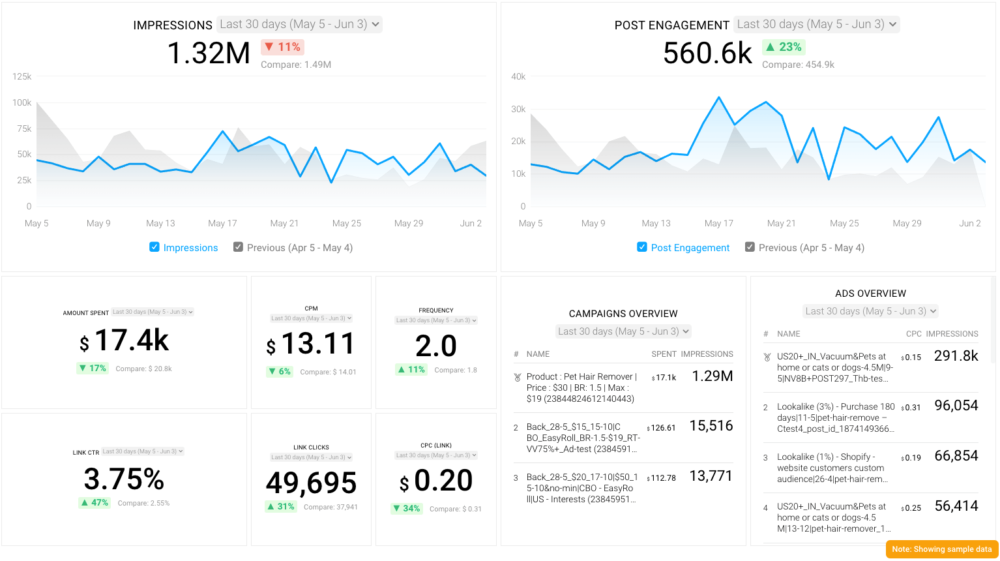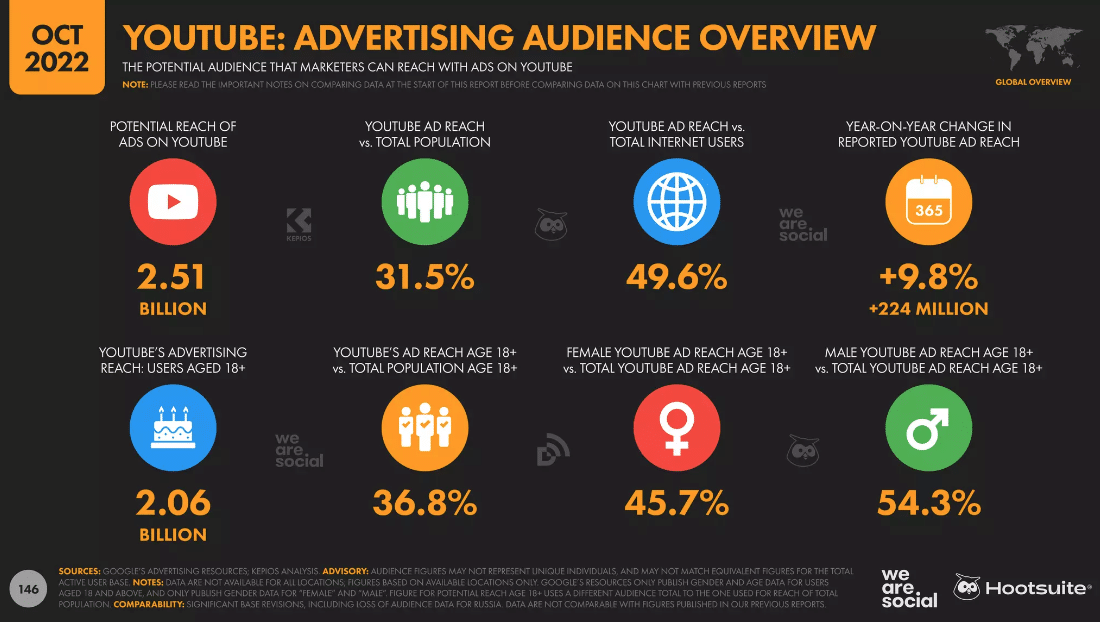Paid Ads
The oldest trick in the book still packs a punch.
Find out when why and when you should invest in paid ads.
You can't teach an old dog new tricks
But some tricks can still entertain us every once in a while. When it comes to capturing the attention of your target audience and boosting your online sales, Paid Advertising has emerged as a powerful strategy many years ago, together with digital platforms. Among the most prominent forms of Paid Advertising are Google Paid Ads, which allow businesses to prominently display their ads on Google's search engine results pages, right at the top, for everyone (who's searching related keywords) to see. Other popular platforms such as Facebook, Instagram, and Twitter also offer their own Paid Advertising options. These methods might seem like old-school marketing strategies in a world dominated by SEO and organic reach, but they remain a valuable foot-in-the-door, especially for small businesses in need of immediate results.
 One of the immediate advantages of Paid Ads is the ability to
gain visibility and generate traffic almost instantly.
Unlike the gradual buildup of organic SEO efforts, Paid Ads can put
your business in front of a relevant audience right away.
However, it's crucial to weigh the benefits against the costs,
as Paid Ads can be quite costly and may not guarantee
long-term success. Industry statistics show that
businesses spend billions on Paid Advertising annually,
yet the click-through rates can vary widely, with some
industries achieving great results while others struggle
to justify the investment. In this dynamic landscape,
finding the right balance between Paid Advertising and organic
SEO is essential for businesses looking to maximize their
online presence and achieve sustainable growth.
One of the immediate advantages of Paid Ads is the ability to
gain visibility and generate traffic almost instantly.
Unlike the gradual buildup of organic SEO efforts, Paid Ads can put
your business in front of a relevant audience right away.
However, it's crucial to weigh the benefits against the costs,
as Paid Ads can be quite costly and may not guarantee
long-term success. Industry statistics show that
businesses spend billions on Paid Advertising annually,
yet the click-through rates can vary widely, with some
industries achieving great results while others struggle
to justify the investment. In this dynamic landscape,
finding the right balance between Paid Advertising and organic
SEO is essential for businesses looking to maximize their
online presence and achieve sustainable growth.
How to make your money count
Crafting a Successful Paid Ad: Creating a highly effective paid ad involves a blend of technical finesse, strategic thinking, and creativity. Firstly, extensive keyword research is paramount, as it helps identify the specific search terms your target audience is using. These keywords form the foundation of your ad's success. Utilizing tools like Google Keyword Planner or SEMrush can provide invaluable insights into keyword selection and competition. Next, the ad copy itself must be concise, compelling, and tailored to the platform it's intended for. A captivating headline, clear call-to-action (CTA), and persuasive ad text are crucial. Visual elements, such as eye-catching images or videos, add an extra layer of engagement. Moreover, setting the right bid strategy, targeting the appropriate audience demographics, and optimizing the ad's landing page for conversions are essential technical steps in a successful campaign.
 Which platform?
Selecting the right digital platform to showcase your paid ads
is pivotal. Different platforms cater to distinct audiences and
user behaviors. Google Ads, for instance, is ideal for capturing
users actively searching for products or services, while Facebook
Ads allows for highly granular customer targeting based on
interests and demographics. LinkedIn Ads, on the other hand,
can be effective for B2B campaigns. Your choice should align with
your business goals and target audience.
Which platform?
Selecting the right digital platform to showcase your paid ads
is pivotal. Different platforms cater to distinct audiences and
user behaviors. Google Ads, for instance, is ideal for capturing
users actively searching for products or services, while Facebook
Ads allows for highly granular customer targeting based on
interests and demographics. LinkedIn Ads, on the other hand,
can be effective for B2B campaigns. Your choice should align with
your business goals and target audience.
Measuring the ad's performance is equally critical; platforms provide valuable metrics like click-through rates (CTR), conversion rates, and return on ad spend (ROAS) that inform the optimization process. Monitoring these statistics allows you to refine your strategy and maximize the ad's impact.
Paid Ads & the Lingo
Click-Through Rate (CTR): CTR measures the percentage of users
who click on your ad after seeing it. A high CTR indicates that
your ad is resonating with the audience.
Conversion Rate: Conversion rate signifies the percentage of
users who take the desired action after clicking on the ad, such
as making a purchase or filling out a contact form. It's a vital
metric for evaluating campaign effectiveness.
Cost-Per-Click (CPC): CPC represents the price you pay each time
a user clicks on your ad. Lower CPC indicates efficient ad
spending, while a higher CPC may require optimization.
Quality Score: Quality Score is a Google Ads metric that evaluates
the relevance and quality of your ad, keywords, and landing page.
It directly impacts ad ranking and costs.
Return on Investment (ROI): ROI measures the profitability of
your paid advertising efforts. It's calculated by subtracting ad
costs from the revenue generated by the campaign. A positive ROI
indicates a successful campaign.
Pay, if you must. But also invest.

Our first advice for clients who wish to invest in paid ads is to assure them we'll absolutely deliver ads that will convert, of course. But right afterwards, we see ourselves obliged to mention they must follow-up with a long-term plan. The effects of a successful paid ad campaign is short-lived and won't provide you or your business with any kind of stability. Nor will it be powerful enough to sustain new clients consistently. Pay for the ads that will get you immediate results - if your situation so requires. But do it together with a far-thinking, long-term strategy that will actually help you switch gears on your business. That being said, if paid ads is the optimal path, here's what we should consider:
Targeting and Personalization: Paid advertising allows you to tailor your messages to specific demographics, locations, and interests, ensuring your ads reach the right audience at the right time.
Budget Management: Effective budgeting is crucial in paid advertising, where you set daily or campaign limits to control spending. Understanding cost-per-click (CPC) and bidding strategies helps optimize your budget for maximum return on investment (ROI).
Ad Creative and Copywriting: Crafting engaging ad copy and visuals is key to capturing users' attention. A/B testing allows you to refine your ad creative based on performance data.
Ad Quality Score: Platforms like Google Ads use quality scores to assess the relevance of your ads, landing pages, and expected click-through rates. Higher quality scores can lead to better ad placement and lower costs.
Competitor Analysis: Monitoring and analyzing competitors' ad campaigns help identify strengths and weaknesses, allowing you to fine-tune your own ad strategy to gain a competitive edge.
Reporting and Analytics: Data and analytics are essential for tracking the success of your paid ad campaigns. Metrics like click-through rate (CTR), conversion rate, and return on ad spend (ROAS) provide insights for optimization.
Social Media Advertising: It's the use of platforms like Facebook, Instagram, Twitter, and LinkedIn to promote products or services to a targeted audience. These ads can be highly personalized, engaging users through images, videos, and sponsored content. The key benefits are precise audience targeting and robust analytics to measure performance, making it an essential tool for businesses to connect with potential customers.
The small business advantage
 Starting with paid ads offers small businesses a chance to
gather valuable data and insights about their target audience's
preferences and behaviors. This data-driven approach allows for
precise audience-targeting, ensuring that your ads are shown to
those most likely to convert into customers. With the right ad
campaigns, you can see an average click-through rate (CTR) of
around 3%, demonstrating the potential for substantial website
traffic. While paid ads provide an initial boost, it's crucial
to complement this strategy with long-term digital marketing
efforts like SEO, content creation, and social media engagement
for sustainable growth and continued competitive advantage in
the ever-evolving digital landscape.
Starting with paid ads offers small businesses a chance to
gather valuable data and insights about their target audience's
preferences and behaviors. This data-driven approach allows for
precise audience-targeting, ensuring that your ads are shown to
those most likely to convert into customers. With the right ad
campaigns, you can see an average click-through rate (CTR) of
around 3%, demonstrating the potential for substantial website
traffic. While paid ads provide an initial boost, it's crucial
to complement this strategy with long-term digital marketing
efforts like SEO, content creation, and social media engagement
for sustainable growth and continued competitive advantage in
the ever-evolving digital landscape.
Another valuable aspect of starting with paid ads is the opportunity to gain significant insights by examining your competitors' strategies. By analyzing their paid ad campaigns, you can uncover valuable information about keywords, ad copy, and targeting tactics that are working in your industry. This competitive intelligence can help you refine and improve your own ad campaigns to stay ahead in the market. Additionally, studying competitors' paid ads can provide a deeper understanding of your target audience's preferences and behaviors, allowing you to tailor your messaging and offerings more effectively.
In the ever-evolving landscape of digital advertising, this competitive edge in insights can prove invaluable for small businesses looking to establish a strong online presence and outperform their rivals recent statistics, paid advertising can increase brand awareness by up to 80%, ensuring that your business is on the radar of potential clients. Moreover, studies have shown that businesses using paid search ads can witness a 200% return on investment (ROI) - or more!